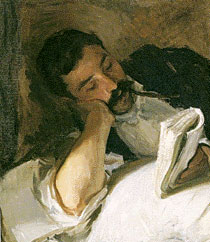Writing Assignment #2:
"Theoretical Perspectives and Images of Social Life" (Units 3A & 3B)
Choose ONE of the following options
1. Provide an overview of the "symbolic interactionist" perspective in sociology - what are its main ideas, how does it differ from other sociological approaches. Next, summarize Erving Goffman's “dramaturgical approach” (which is one variant of the interactionist perspective) and apply it to one specific social interaction that you have experienced in your social life. Examples are job interviews, first day on the job, first dates, meeting the parents of significant others, professional or in-class presentations. Discuss how the concepts of "social roles," "scripts," “rehearsal,” “impression management,” "props," “face-work” and “front” and “back” stage help describe your role performance. Be certain to define each of these concepts.
________________
2. The structural-functional approach to the study of society stresses that (among other things) the major institutions in society – family, polity, economy, religion, education, science – operate independently and that each has specifc functions they fulfill that keeps society operating smoothly. But since these institutions are part of the same system, they are also both interdependent and interpenetrating; whatever happens in one institution will affect all of the others. Problems arise, however, because important differences will be found in the goals each institution strives to attain as well as in the core beliefs, values, and interests each institution places emphasis upon. Illustrate this last point point by discussing a current controversy posed by the intersection of two or more institutions (i.e., separation of church and state; teaching intelligent design in biology classes; using economic principles to assess educational outcomes; home schooling; textbook/curriculum debates.)
__________________
3. The point was made in class that conflict was "built into the structure of society and that most conflicts occur when people are living up to the expectations associated with the social positions (statuses) that they occupy - they are doing what they are supposed to be doing." Explain why this is the case and then, using an example from your life, illustrate this point.
Next, discuss one example of (a) status-conflict, (b) status-strain, (c) role-conflict, and (d) role-strain in your daily life. Describe the conflicts and strains and indicate how you resolve these issues.
Sample essay (click here)
_______________________
4. The German word "Schlimmbesserung" refers to an effort to make something better that actually makes things worse. The American saying is that "The road to hell is paved with good intentions." Each of these highlights the important point noted by sociologists that all actions have multiple consequences and that the majority of these consequences are unintended and unanticipated. Choose a social action and trace its multiple consequences for different individuals, groups, social categories, and society as a whole, identifying which few of these consequences are manifest (intended by the actors) and those that are latent (unintended and unanticipated).
